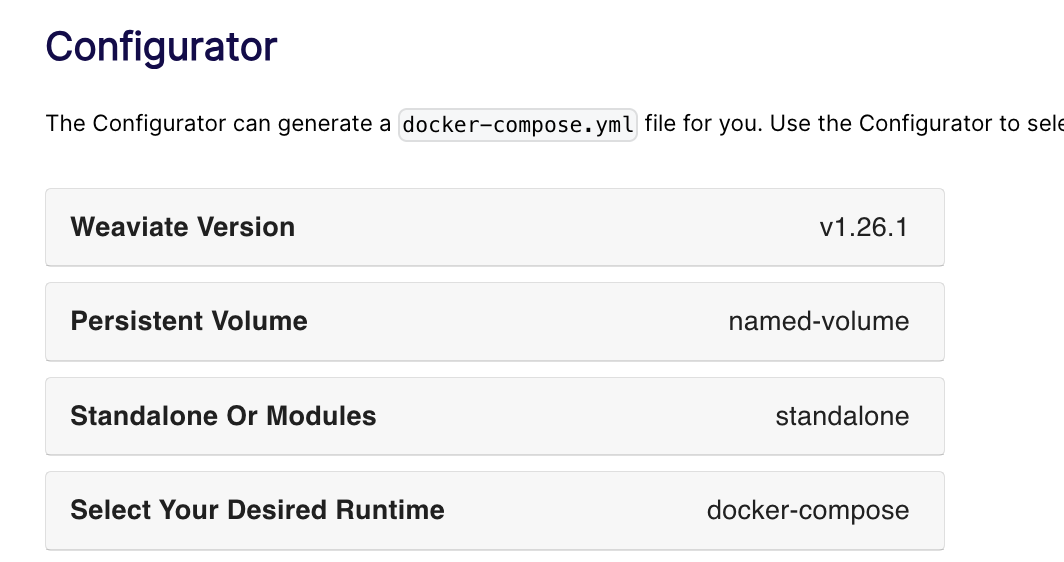Weaviate is an open-source, decentralized knowledge graph for vector-based, real-time semantic search and recommendation systems. It leverages the power of graph databases and machine learning to efficiently organize and retrieve complex data structures.
Weaviate is built on a schema-driven approach, representing data as entities and their relationships. It utilizes word embeddings to transform textual data into high-dimensional vectors, enabling similarity-based searches and contextual recommendations.
The best way to learn Weaviate is a hands-on approach.
Requirements
In this tutorial, we will demonstrate the installation methods and process using:
- An Ubuntu system (22.04)
- A sudo or root user.
Installing Docker on Ubuntu
The first step is to install Docker and Docker Compose on Ubuntu. Start by refreshing the system repositories as:
sudo apt-get updateOnce updated, run the command below to remove any conflicting packages that are associated with Docker or Docker components:
for pkg in docker.io docker-doc docker-compose podman-docker containerd runc; do sudo apt-get remove $pkg; doneNext, install the packages to allow APT to download packages over HTTPS protocol:
sudo apt-get install ca-certificates curl gnupgIn the next step, add the Docker’s official GPG key with the command:
sudo install -m 0755 -d /etc/apt/keyrings
curl -fsSL https://download.docker.com/linux/ubuntu/gpg | sudo gpg --dearmor -o /etc/apt/keyrings/docker.gpg
sudo chmod a+r /etc/apt/keyrings/docker.gpgOnce imported, run the command below to setup the repository:
echo \
"deb [arch="$(dpkg --print-architecture)" signed-by=/etc/apt/keyrings/docker.gpg] https://download.docker.com/linux/ubuntu \
"$(. /etc/os-release && echo "$VERSION_CODENAME")" stable" | \
sudo tee /etc/apt/sources.list.d/docker.list > /dev/nullFinally, update the system repositories and install Docker and associated components as shown:
sudo apt-get update
sudo apt-get install docker-ce docker-ce-cli containerd.io docker-buildx-plugin docker-compose-pluginThis should download the Docker engine, Docker compose, and all associated packages.
Configuring Weaviate
Once we have Docker on our machine, we can configure the docker-compose.yml file, which we will use to launch the Weaviate cluster.
Luckily, Weaviate provides us with a graphical-based configurator that allows us to select the modules and features of Weaviate that we wish to include.
Open your browser and navigate to the link below:

Locate the configuration tool and follow the procedure, selecting the tools and features you wish to include in your Weaviate cluster.

Once completed, you will get the commands to download the docker-compose.yml as shown in the example below:
curl -o docker-compose.yml "https://configuration.weaviate.io/v2/docker-compose/docker-compose.yml?modules=standalone&runtime=docker-compose&weaviate_version=v1.26.1&weaviate_volume=named-volume"
The above command downloads a standalone copy of the Weaviate cluster with no modules. You can check the file with your editor to view the options on the container.
You should get an example configuration.
The next step is to start the Docker container; we can use the command as shown:
docker-compose up -dOnce started, you can use API clients such as cURL to ping the container on port 8080.
Conclusion
In this tutorial, you learned using the Weaviate configurator to create a basic Weaviate standalone cluster using Docker Engine.


